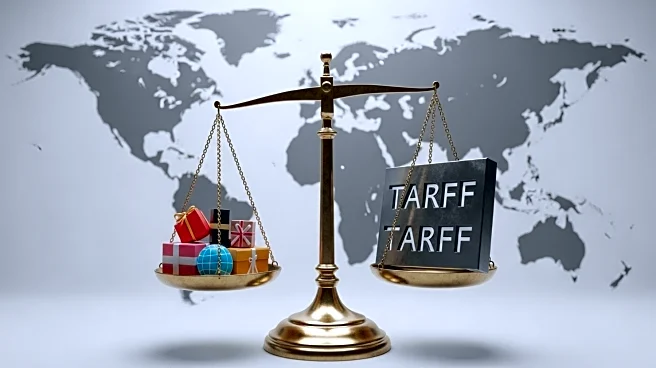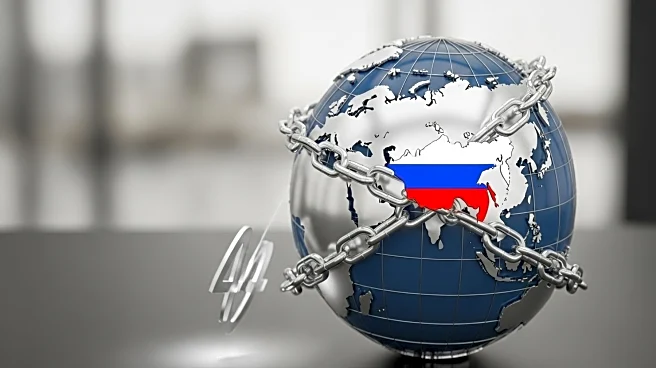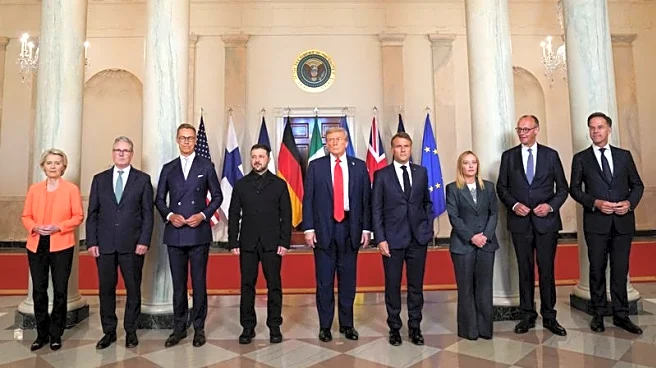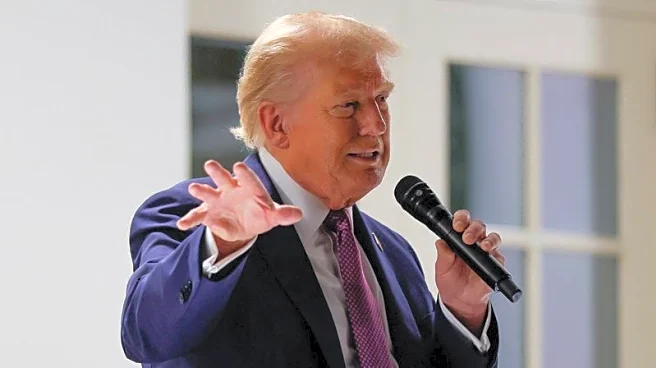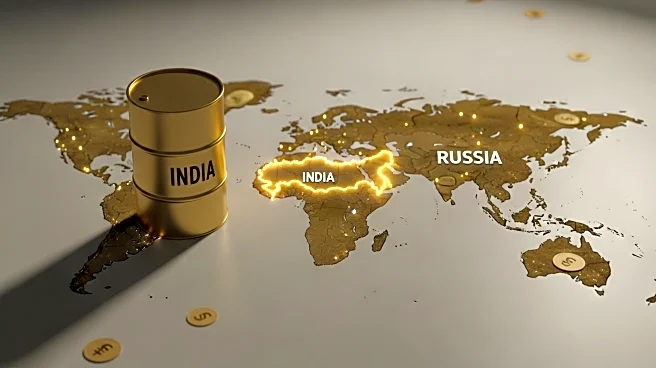What's Happening?
The United States has imposed a 50% tariff on many Indian-origin goods, significantly affecting trade relations and economic sectors such as textiles, gemstones, jewelry, seafood, and automobiles. This move is part of the Trump administration's strategy to penalize India for its involvement in purchasing Russian crude oil, which is seen as supporting the Kremlin's war efforts. Despite India's defiance and continued importation of Russian oil, the tariffs have led to a decrease in India's oil imports from Russia. The U.S. remains India's largest export market, and the tariffs are expected to increase costs for U.S. businesses and consumers purchasing Indian goods.
Why It's Important?
The tariffs imposed by the U.S. on Indian goods have significant implications for both countries. For India, the increased tariffs threaten its labor-intensive sectors, potentially leading to economic strain and job losses. For the U.S., businesses and consumers may face higher prices for Indian products, affecting market dynamics and consumer spending. The move also risks damaging the goodwill built between the two nations over decades, potentially altering geopolitical alliances and trade strategies. The situation highlights the complexities of international trade policies and their far-reaching impacts on global economic relations.
What's Next?
India may seek to negotiate better trade terms with the U.S., although current negotiations have stalled over issues such as opening India's dairy and agricultural sectors to American companies. The tariffs could lead to further diplomatic tensions, with India possibly strengthening ties with other nations like China. The U.S. may continue to leverage tariffs as a tool to influence international trade practices, potentially leading to broader economic shifts and realignments.
